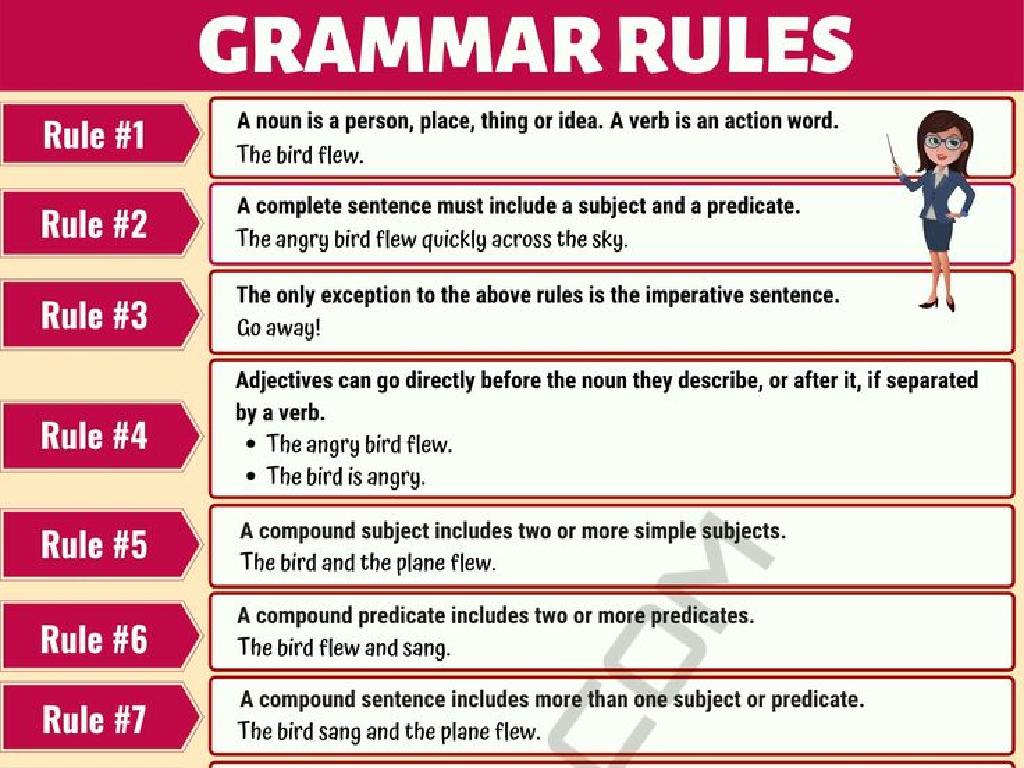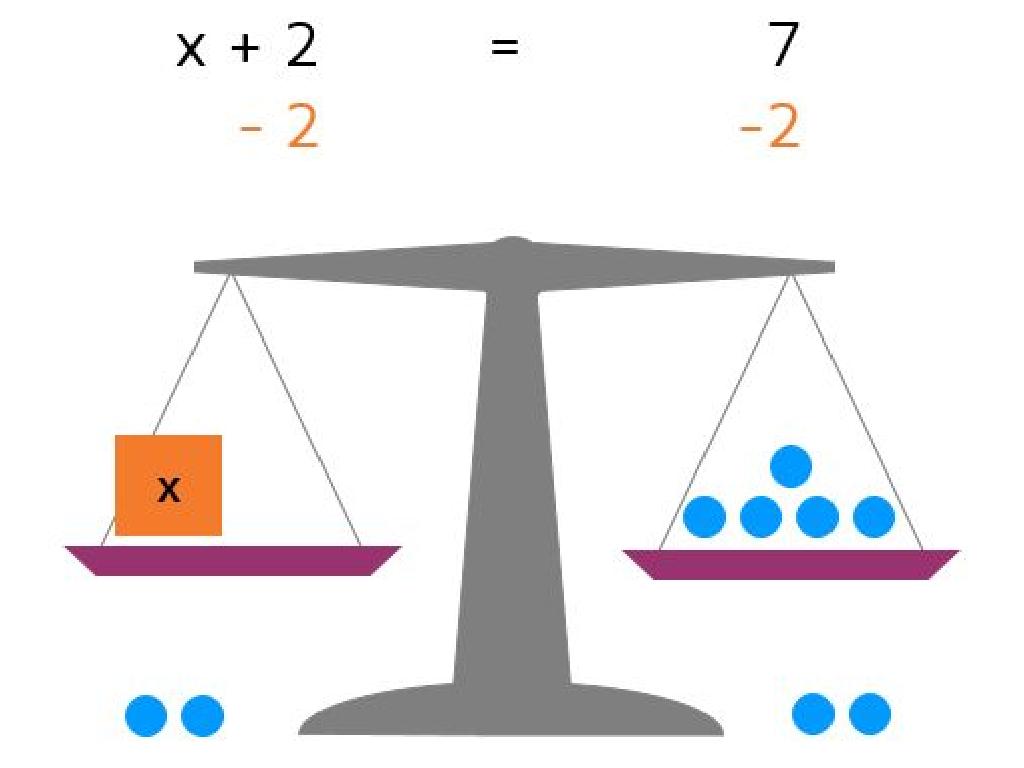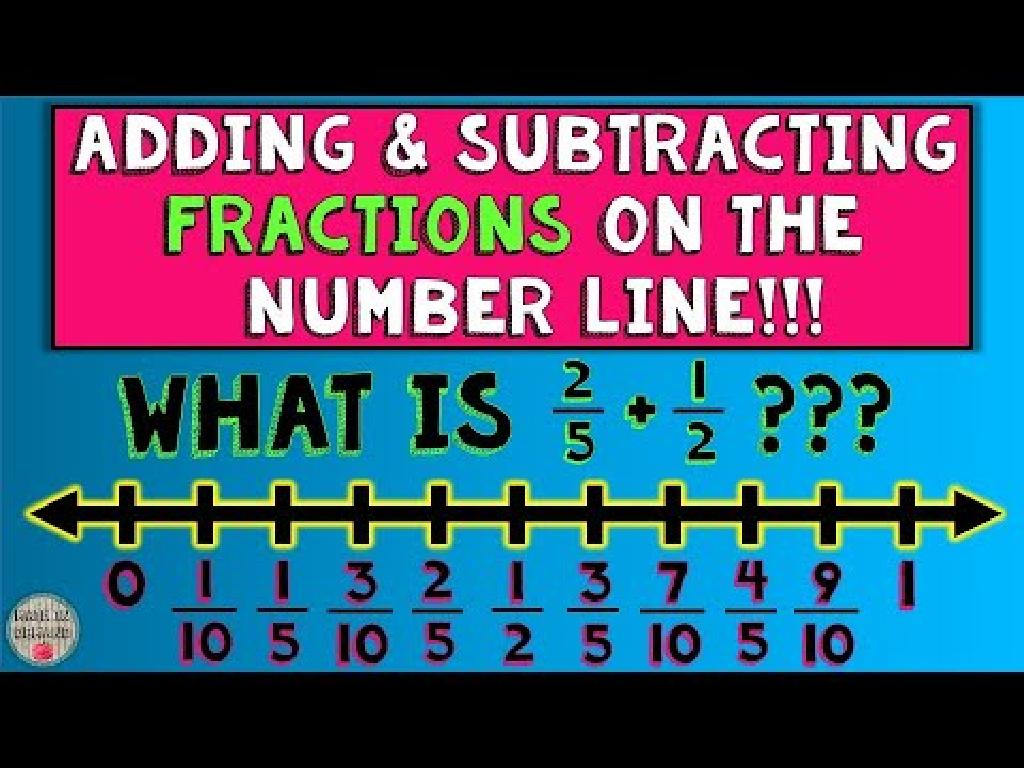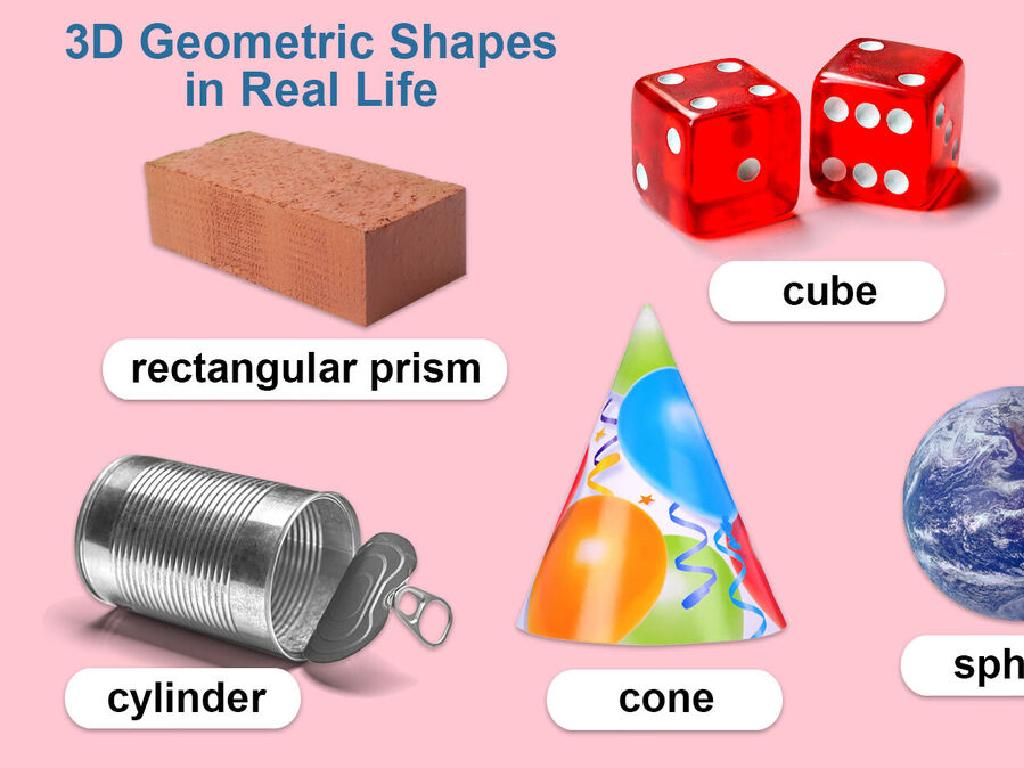Multiply By Multiples Of Ten
Subject: Math
Grade: Fourth grade
Topic: Multiply By Two-Digit Numbers
Please LOG IN to download the presentation. Access is available to registered users only.
View More Content
Multiplying by Multiples of Ten
– Review basic multiplication
– Multiplication as repeated addition
– If you have 4 groups of 3, that’s 3+3+3+3
– Multiplying by 10s is practical
– It simplifies math in everyday situations, like buying 10 packs of stickers
– Practice with examples
– Try 3 x 10, 4 x 20, and 5 x 30 to see patterns
|
Begin with a quick review of basic multiplication facts to ensure a solid foundation. Explain multiplication as repeated addition, which will help students understand the concept of multiplying by multiples of ten. Emphasize the practicality of this skill in real-life scenarios, such as calculating total costs when buying multiple items. Provide examples and encourage students to recognize the pattern that emerges when multiplying by 10, 20, 30, etc. This will set the stage for more complex multiplication and help students feel more confident in their math skills.
Multiplying by Multiples of Ten
– Understanding multiples of ten
– Numbers like 10, 20, 30 are multiples of ten because they can be divided by 10 without leaving a remainder.
– Examples: 10, 20, 30, and so on
– 10 is one ten, 20 is two tens, 30 is three tens, and it continues in this pattern.
– Recognizing patterns with tens
– Notice how the zero at the end of each number helps us quickly see it’s a multiple of ten.
– Practice multiplying by tens
– Let’s multiply 5 by multiples of ten: 5×10=50, 5×20=100, 5×30=150, and so on.
|
This slide introduces students to the concept of multiples of ten, which is foundational for understanding place value and performing multiplication with larger numbers. Start by explaining what multiples are, using ten as a base. Show clear examples of multiples of ten and highlight the pattern that the number of zeros increases as we multiply by ten each time. Engage the students with practice problems where they multiply single-digit numbers by multiples of ten to reinforce the pattern and prepare them for more complex multiplication tasks.
Multiplying by Multiples of Ten
– Single-digit multiplication by tens
– Multiply numbers like 3 x 10, 4 x 20, etc.
– Place value in multiplication
– Understand how the zero in tens place increases the value
– Guided practice problems
– Solve examples together: 5 x 30, 7 x 40
– Applying the skills learned
|
This slide introduces the concept of multiplying single-digit numbers by multiples of ten, emphasizing the role of place value in understanding how the value increases. Start by demonstrating simple multiplications such as 3 x 10 and progress to larger multiples like 4 x 20, explaining that the zero in the tens place signifies a tenfold increase. Provide guided practice problems and solve them as a class, ensuring that students grasp the concept. Encourage students to apply these skills independently with additional problems, offering support as needed. This foundational skill will aid in their understanding of larger multiplication problems.
Multiplying by Multiples of Ten
– Align place values correctly
– Place the two-digit number above the multiple of ten, ensuring ones are under ones, tens under tens.
– Steps to multiply by multiples of 10
– Multiply as if there were no zeros, then add the zeros from the multiple of ten to the product.
– Recognize and avoid common errors
– Don’t forget to add the zeros from the multiple of ten after multiplying.
– Practice with example problems
– Use examples like 24 x 30: multiply 24 x 3 = 72, then add one zero to get 720.
|
This slide introduces students to the concept of multiplying two-digit numbers by multiples of ten. Emphasize the importance of aligning place values, as this is crucial for accurate multiplication. Walk through the multiplication process step by step, highlighting that they should multiply the numbers as if there were no zeros and then append the zeros from the multiple of ten at the end. Discuss common mistakes, such as forgetting to add zeros or misaligning numbers, and how to avoid them. Provide several example problems for the students to practice and solidify their understanding, ensuring they apply the correct method each time.
Practice Time: Multiplying by Multiples of Ten
– Solve multiplication problems as a class
– Learn tips to check your work
– Use estimation and double-check by reversing the process
– Discuss solutions with classmates
– Explain your method to a friend and listen to theirs
– Work together to solve tricky problems
– Team up to tackle more challenging questions
|
This slide is designed for an interactive class activity focused on multiplying by multiples of ten. Begin by solving a few problems together as a class to demonstrate the process. Introduce tips for checking work, such as estimation and reverse multiplication. Encourage students to discuss their methods with peers, fostering a collaborative learning environment. Provide a set of problems of varying difficulty for the students to work on in small groups, allowing them to support each other and develop problem-solving skills. As an extension, you can have students create their own multiplication problems for peers to solve. This activity will help solidify their understanding of the concept and build confidence in their mathematical abilities.
Multiplying by Multiples of Ten: Real-World Applications
– Understanding everyday math
– Examples: money and measurements
– Calculating dollars or cents, or measuring lengths and weights
– Counting items in large quantities
– How many packs of 10 pencils do we have with 100 pencils?
– Group talk on using this skill
– Discuss with classmates about when you use multiplication by 10s
|
This slide aims to show students how multiplication by multiples of ten is not just a math skill but a practical tool they can use in daily life. For instance, when dealing with money, understanding how to quickly multiply can help with budgeting or making purchases. Measurement is another area where this skill is essential, such as calculating the weight of multiple bags of flour or the length of several pieces of wood. Encourage students to think about how they count large quantities of items, like pencils in a box, using multiplication by tens. The group discussion will help them connect math with real-life scenarios and understand the importance of the skill. Provide guidance on how to facilitate the discussion and ensure each student participates and shares their thoughts.
Class Activity: Multiplication Bingo
– Receive your unique Bingo card
– Listen for the teacher’s multiplication problems
– Solve problems and mark your Bingo card
– Use your multiplication skills to find the product
– Aim for five correct in a row to win!
|
This interactive activity is designed to help students practice multiplying by multiples of ten in a fun and engaging way. Each student will receive a Bingo card filled with products that result from multiplying multiples of ten. As the teacher calls out different multiplication problems, students will solve them and mark the corresponding product on their Bingo cards. The goal is to get five correct answers in a row, either horizontally, vertically, or diagonally. The first student to achieve this wins the game. Teachers should prepare a set of multiplication problems involving multiples of ten and ensure that each Bingo card has a random assortment of possible products. It’s important to encourage students to double-check their calculations before marking their cards. This activity not only reinforces multiplication skills but also promotes attentive listening and quick thinking.
Wrapping Up: Multiplication by Multiples of Ten
– Review: Multiplying by multiples of 10
– Homework: Practice worksheet
Complete the provided worksheet with various problems to solve.
– Share your knowledge at home
Explain today’s lesson to a family member to reinforce learning.
– Keep practicing for mastery
|
As we conclude today’s lesson on multiplying by multiples of ten, it’s important to summarize the key concepts. Remind students of the pattern they’ve learned when multiplying any number by 10, 100, or 1000. For homework, assign a worksheet that includes a variety of multiplication problems to reinforce today’s lesson. Encourage students to explain the process of multiplying by multiples of ten to someone at home, as teaching others can help solidify their own understanding. Lastly, emphasize the importance of regular practice to achieve mastery in multiplication, preparing them for more complex math problems in the future.





